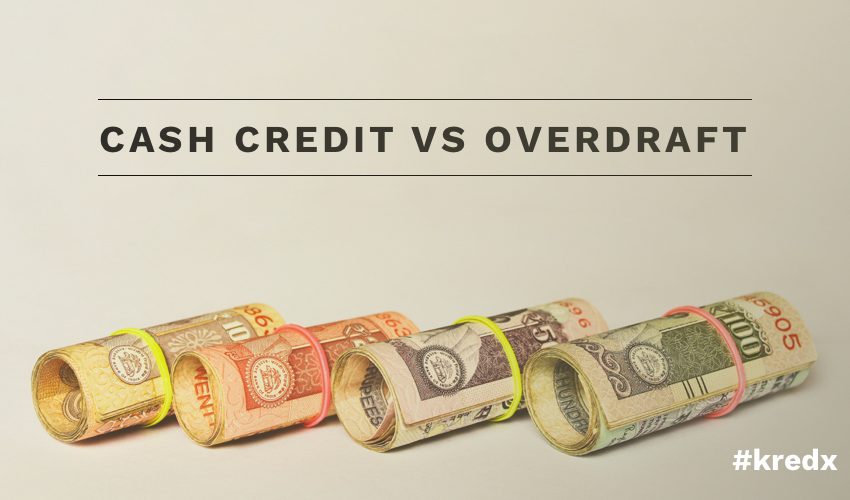
What Is The Difference Between Cash Credit And Overdraft?
Businesspersons and entrepreneurs must maintain healthy cash flow and optimum working capital at all times to keep their enterprises operational.
However, that’s easier said than done!
Also, the goals of optimising inventory or business expansion might never see fruition unless there are sufficient funds available. This is the reason several financial institutions offer flexible options in the form of Cash Credits (CC) and Overdrafts (OD) to their prospective customers. The primary difference between cash credit and overdraft lies in how these are secured. Besides this, there are several other points of difference between them.
So, if you are looking for flexible financing options to meet fleeting business requirements or to initiate your much-awaited dream of expanding operations, know all about CC and overdraft and the prominent differences between them before opting for one.
What Is A Cash Credit (CC)?
Since cash credit and overdraft are both lines of credit facilities offered by lenders, it is rather easy to be confused. Cash credits are short-term financial solutions that a business house can avail by securing any tangible company asset. This could be raw materials from the inventory, stocks or even account statements. As opposed to OD, cash credits are generally offered to business houses and not individuals.
What Are Overdraft Accounts?
Overdraft is an ideal and super flexible financing option for individuals as well as business owners, especially in unforeseeable emergencies. If you hold an OD or checking account, you are subject to overdraft protection. What’s that?
If you run short of funds in your OD account to complete a transaction, the overdraft facility will cover the difference and let the balance drop to the negative side of the scale. This process of offering an emergency credit to the overdraft account holder, when the balance drops below zero, is called overdraft protection. Let’s understand this with an example.
Let us assume that you need to buy administrative IT equipment worth Rs. 2.5 Lakh. However, you have only Rs. 2.3 Lakh in your OD account. In such cases, you might be able to overdraw your account and the balance in your account after the transaction would be -Rs. 0.3 Lakh.
Now that you know the basic idea of cash credit and overdraft, it is now time to discuss the key differences between the two.
Differences: Cash Credits Vs Overdraft
Purpose
While cash credit can be used to purchase transient business requirements such as buying raw materials and maintaining stocks, OD can be crucial during emergencies and consequently help to keep the business afloat.
Rate Of Interest
Interests are calculated on the entire amount that you withdraw in the case of CC. On the other hand, interest is accrued only on the amount used in an overdraft facility.
Also, the general interest rates are lower in cash credit facilities compared to overdraft.
Maximum Amount Granted
In the case of CC, you can avail credits of up to 60% against the value of your account statements or stock or inventory. Remember, you need to secure a tangible asset to avail CC.
Thus, if the value of your inventory is Rs. 10 Lakh, you can get a cash credit of up to Rs. 6 Lakh.
On the other hand, the lender will decide the maximum overdraft eligibility based on your account and past payment behaviour and credit history. Also, the lender will decide additional charges in OD, whereas there are no such liabilities against CC.
Limit Of Withdrawal
The lending institution can revise the credit limit in CC based on your business value. However, the limit of withdrawal remains unchanged in overdraft.
Bottom Line
Apart from the above two, you can also look into invoice discounting as a viable financing solution to meet any type of business requirements. Understand your needs and then choose one option that fits your business the best.



